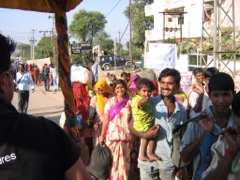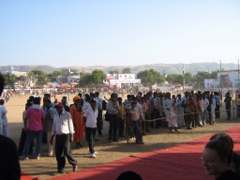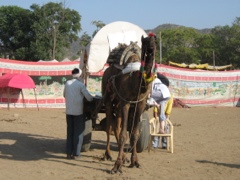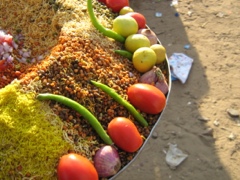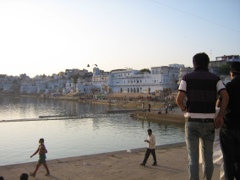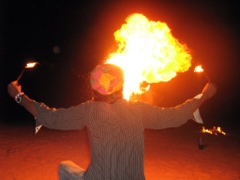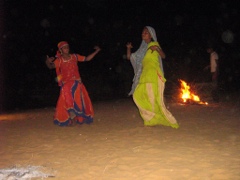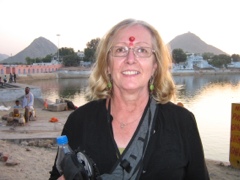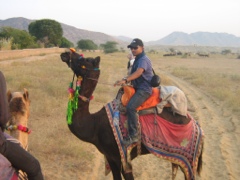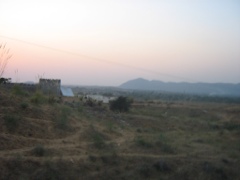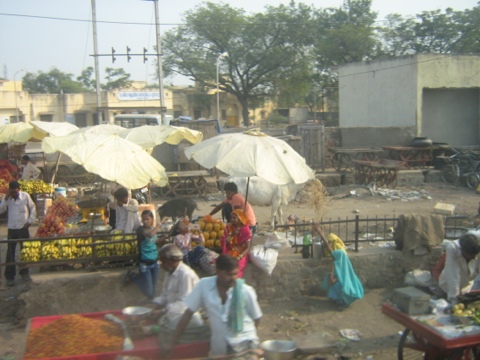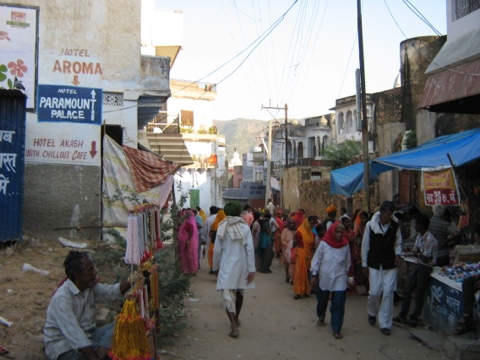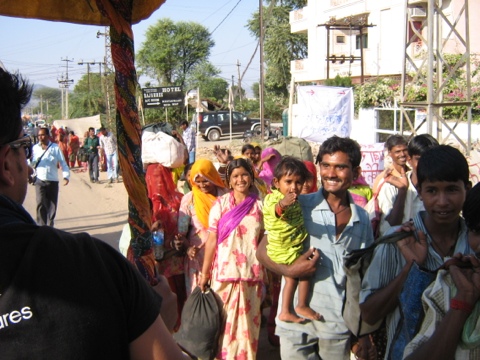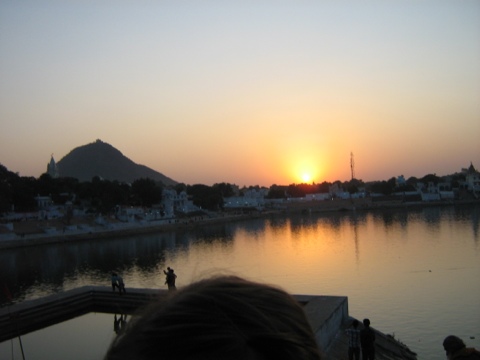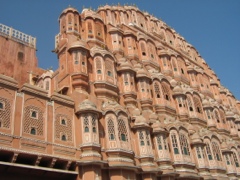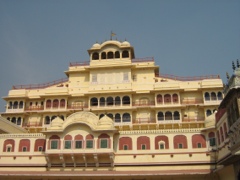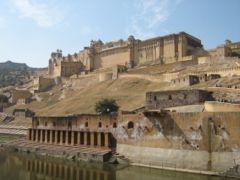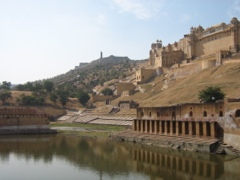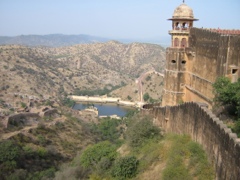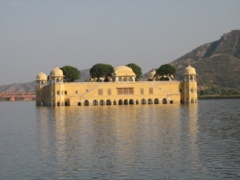In Praise of Travelling With Younger People
(This post is dedicated to Beth, Gemma, Liam, Jenny, Emma, Mark, Terri, Kelly, Naj, Antonia, Alyx, Janine, Ricky and Abhi)
 I was sixty years old when I started to book my trip to India, and I was going to be leaving Canada on my own. Aside from England and Mexico, which I’d visited in the company of other people, and the USA, which is mostly like staying with the neighbours, I’d never gone on this kind of adventure before. My inexperience in international travel has not been caused by a lack of wishing: I’ve always longed to go everywhere. I’ve just never had the money or the time. Now I am determined to see as much of the world as I can before I drop dead – which I hope doesn’t happen for a long time, because there’s a lot I need to see.
I was sixty years old when I started to book my trip to India, and I was going to be leaving Canada on my own. Aside from England and Mexico, which I’d visited in the company of other people, and the USA, which is mostly like staying with the neighbours, I’d never gone on this kind of adventure before. My inexperience in international travel has not been caused by a lack of wishing: I’ve always longed to go everywhere. I’ve just never had the money or the time. Now I am determined to see as much of the world as I can before I drop dead – which I hope doesn’t happen for a long time, because there’s a lot I need to see.
As keen as I was for a solo adventure, I knew that going to India all by myself was not a good idea. So I signed up for a tour. On the recommendation of my elder son and his wife, who are interested in sustainable travel and had just returned from a wonderful trip to Morocco, I used the Responsible Travel network (“Travel Like A Local”). I settled on a Gap Adventures tour because the price was very reasonable, it went where I wanted to go when I wanted to go there, and it was billed as a “small group adventure.”
 I knew from the company’s name that its primary market was the “gap” age group—those kids who are taking a year off between high school and university (although very recently the company has been renamed “G Adventures,” so maybe it wants to expand its reach). [*Update – I was wrong in my assumption about the name of GAP Adventures — see first comment below — but since I’m sure I’m not the only one who made the mistake, I’ll not editing it out.*] Still, the photo of the woman with the elephant on the page where my tour was described (Delhi to Goa) reassured me that not everyone was going to be a teenager. As did the agents when I called to ask, and with whom I ultimately booked the tour.
I knew from the company’s name that its primary market was the “gap” age group—those kids who are taking a year off between high school and university (although very recently the company has been renamed “G Adventures,” so maybe it wants to expand its reach). [*Update – I was wrong in my assumption about the name of GAP Adventures — see first comment below — but since I’m sure I’m not the only one who made the mistake, I’ll not editing it out.*] Still, the photo of the woman with the elephant on the page where my tour was described (Delhi to Goa) reassured me that not everyone was going to be a teenager. As did the agents when I called to ask, and with whom I ultimately booked the tour.
Although I knew that the majority of my travelling companions would be younger than I am, it was still a bit of a shock to discover at our first meeting in Delhi that all 12 of them were well under forty, most were less than thirty, and some were still not yet twenty. The closest fellow traveller in age to me was about the same age as my older son. The group leader was 29, and the group-leader-in-training who accompanied us was younger than that.
Despite still being glad to have companions and a group leader, I was now quite apprehensive, because I felt that these people were not going to want to have an old lady hanging around with them. Amazing as it seems to me – because I feel about the same as I ever did, and I know I am slower than I used to be but I certainly do not feel “old” – I have begun to run into ageism here and there. So I was wary. And sympathetic: I do remember from my own younger years that hanging around with people thirty or forty years older than I am was – with a few exceptions – not my idea of a good time. I always figured they would need to be spoken to slowly and clearly, and/or taken care of when they came apart at the joints.
In addition to the age thing, aside from two people in their thirties and one  cheerful 19-year-old, everyone was already travelling with somebody else with whom they’d come from home, so they didn’t really need a third wheel tagging along with them. And the two people in their thirties soon enough started travelling together too.
cheerful 19-year-old, everyone was already travelling with somebody else with whom they’d come from home, so they didn’t really need a third wheel tagging along with them. And the two people in their thirties soon enough started travelling together too.
My strategy at the outset was to stay away from the others in the group except for meals and other group activities. I guess I dealt with them the way I do other people’s pets or children–I do my own thing, and leave it to them to come to me if they should wish to do so.
This approach was not difficult: in fact, it suited me just fine. I am a (sociable) solitaire – a writer, an observer. I normally prefer to be alone. So I booked optional tours for one, and wandered around by myself (which is one of the reasons I ended up at Jaigarh instead of Amber Fort).
I have no idea what the other members of the group thought of me, dragging along my suitcase on its little wheels as they lofted huge, heavy packs onto their backs and exchanged notes about their trips to Thailand, Cambodia, Australia, Africa, Europe, South America. But gradually over the first week or so we got to know one another a bit better, and they separated themselves from one another in my mind. A couple of them were veteran solo travellers who’d been to dozens of places. A few had been travelling with their families since they were infants, and were on their first adult adventures. Others were somewhere on the continuum between well travelled and untravelled. Some were great partiers, others were less inclined to stay out half the night. Some were vegetarians, three were health professionals (hi, Gemma, Beth, and Naj!). Most were just starting out their adult lives. All of us were on our first trip to India, and all of us had to make adjustments to the unfamiliar aspects of that country. We were such a diverse group that I doubt we’d have ever come together – especially every day for more than two weeks – in any other context, but we had India in common. And that was plenty.
Side note: I was totally delighted to see that almost every last one of them had brought a book or two along with them – mostly novels, and literate ones at that. I wanted to drag all the doom-and-gloomers from the writing and publishing communities out of their internet caves to show them that the need for good writers is not dead: there are young people out there who still can – and do – read entire books!
 As time went on, I found my fellow travellers to be as distinct in their travel interests, goals, and approaches from one another as I was from them. But all of them were resilient and friendly – game to go anywhere and do anything (except when they were doubled up from food poisonings, hangovers, or both) and more than willing to include me in their activities. They came from Ireland, Australia, Sweden, and England (Ricky – group leader in training – and Abhi – group leader extraordinaire – came from India, of course), and we talked to one another about our home countries as well as other places we had visited. They were open-minded and tolerant, and loved to laugh.
As time went on, I found my fellow travellers to be as distinct in their travel interests, goals, and approaches from one another as I was from them. But all of them were resilient and friendly – game to go anywhere and do anything (except when they were doubled up from food poisonings, hangovers, or both) and more than willing to include me in their activities. They came from Ireland, Australia, Sweden, and England (Ricky – group leader in training – and Abhi – group leader extraordinaire – came from India, of course), and we talked to one another about our home countries as well as other places we had visited. They were open-minded and tolerant, and loved to laugh.
I have so many wonderful memories of them – Emma reading the future in others’ palms at dinner in Pushkar, Liam looking ready to adopt the subcontinent as his second home as he happily settled into the saddle of his camel, Naj joining in a Hindu wedding procession in the streets of Jaipur, Mark begging Terri to stop sharing her impressions of the Kama Sutra so loudly on the plane to Goa, Antonia and Janine cheerfully setting off to buy food from a road-side stand while the rest of us panicked that the bus would leave before they got back on board, Abhi counting heads in Hindi everywhere we went.
 Aside from the two who left early, no one seemed fazed by the dirt, the crowds, or the ailments we all came down with. They were an absolutely fabulous group to travel with. Every single one was a good sport, friendly and eager to see, learn and do. They were energetic, curious and (for the most part) sensible.
Aside from the two who left early, no one seemed fazed by the dirt, the crowds, or the ailments we all came down with. They were an absolutely fabulous group to travel with. Every single one was a good sport, friendly and eager to see, learn and do. They were energetic, curious and (for the most part) sensible.
I began to appreciate them soon after we arrived in India, even before I really got to know them. We were in Agra in our various tuk-tuks, bumping knees with motorcycle riders, swerving around cattle and bicycles, pedestrians and trucks, catching our breaths and holding them as once again we came within whiffing distance of an open sewer. At some point near the Taj Mahal, I looked up to see an air-conditioned bus going by, all sealed off from the air, the noise and the dirt, filled with people who, on the basis of age, it would have been more appropriate for me to travel with than the group of “kidlets” I was with. And I knew that I did not want to be on that bus.
 It turned out that my concerns about fitting in were all in my head and not in the heads of my travelling companions. In fact, it was two of them, Mark and Naj (thanks, guys) who insisted that I cancel my plans to return to Mumbai at the end of the journey and join them at the Presa di Goa for my last three days in India.
It turned out that my concerns about fitting in were all in my head and not in the heads of my travelling companions. In fact, it was two of them, Mark and Naj (thanks, guys) who insisted that I cancel my plans to return to Mumbai at the end of the journey and join them at the Presa di Goa for my last three days in India.
Next time I go travelling, I will try to find a group that includes a few people who are closer to my age, but the only other adjustment I plan to make is to bring my backpack instead of a suitcase. I don’t mind being older in the least, but I don’t want anyone thinking that I should be riding on that bus.

























































